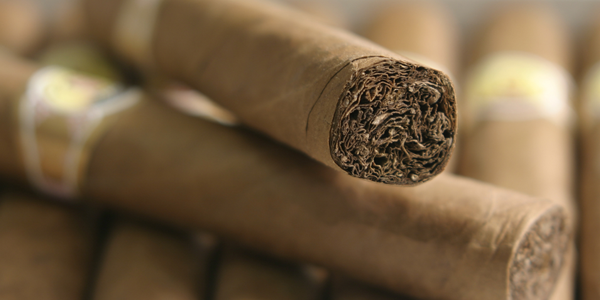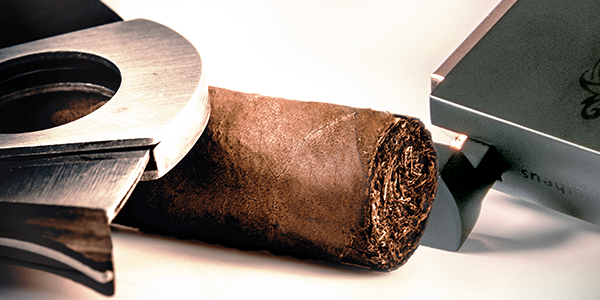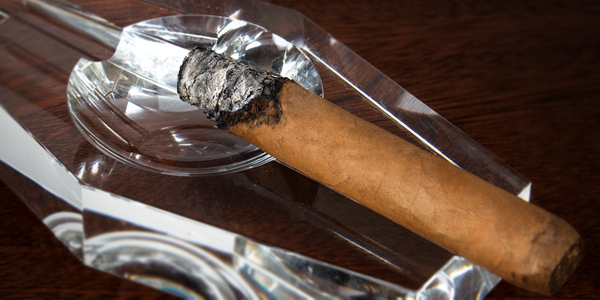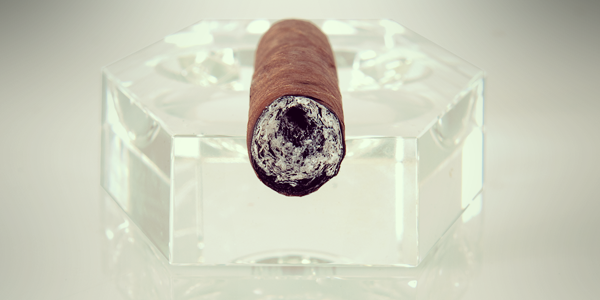How to Fix Common Cigar Problems
If your cigar is not properly rolled, stored, or prepared before you smoke it, a number of things can interfere with its performance. Following, we’ve highlighted a handful of common cigar problems. For most, there are simple fixes you can carry out to remedy the situation, so don’t panic.
How to Fix a Cracked Wrapper
Sometimes a cigar’s wrapper will crack or start to unravel. This can happen when your cigar is dry, or if you simply tapped it against the side of the ashtray a little too hard, or if it’s not adequately protected in your pocket. Some wrappers are more delicate than others. If the wrapper is flaking apart and falling off, your cigar could be well beyond the point of repair. However, if it appears the wrapper is just unraveling in an isolated spot or at one end, you can reapply it.
The technically correct way to repair a cigar’s wrapper leaf is with pectin, or roller’s glue. We’re not surprised if it turns out you don’t have any roller’s glue stashed away for a special cigar-unraveling occasion. For a quick on-the-go fix, you can get away with lip balm from brands like ChapStick or Vaseline. A dab of honey, syrup, or cola will work too. Because they’re naturally sticky, they can be effective at reattaching the wrapper leaf. Just apply small amount. It’s also best not to put the cigar back in your humidor afterward. You could risk it sticking to other cigars inside.
How to Fix a Dry Cigar
Cigars need to be stored in the range of 65-70% RH (relative humidity) and 65-70 degrees Fahrenheit. When you take a cigar out of your humidor, it should exhibit a soft firmness just like you would expect at the time of purchase in a premium retail cigar shop. If your cigar’s wrapper seems to crack or crackle when you give it a gentle squeeze, it could very well be drying out. We don’t recommend smoking a cigar that’s been dried out. It won’t taste very good and it definitely won’t burn correctly.
Check the temperature and humidity levels in your humidor. Replenish the humidification unit if your hygrometer is calling for more moisture. You’ll need to re-humidify your dry cigars. This can take several days or weeks. Cigars should be re-humidified gradually or the wrappers can crack. Cigars expand and contract as humidity and temperature fluctuate, so introduce increases in humidity in a gradual manner. Don’t shock your cigar collection with an excessive dose of moisture thinking they will bounce back faster. The lower your humidity level has become, the longer it will take to re-humidify your cigars. For example, if your humidity is down below 50%, it will take a good bit of time to boost it back up over 65%, especially if you’re storing a lot of cigars.
After replenishing your humidification source, it’s a simple matter of playing the waiting game. Check your humidity every day or so and make sure your humidor is maintaining a consistent humidity level. Continue to add water to the reservoir until you achieve 65-70% humidity. Give your cigars a few days to acclimate to that level. Remember to rotate them during the process too.
How to Fix an Over-Humidified Cigar
Some connoisseurs think spongier cigars are fresher. Not true! But you live and you learn. We’ve seen a handful of guys crank up the humidity in their humidors way too high. Anything over 72% is definitely not recommended. Your cigars will be too wet to smoke, or they won’t burn correctly. Temporarily remove the humidification unit from your humidor and leave the lid open a crack. Stick a pen or a pencil inside the lid so it doesn’t close all the way. This allows excess humidity to gradually dissipate without shocking your cigars.
Some cigar lovers will even take a cigar out of the humidor and let it sit out for a full day before they smoke it. This gives the cigar time to acclimate to the temperature and humidity in the room. Surplus moisture in the cigar will evaporate.
How to Fix a Plugged Cigar
You just cut your cigar and you’re getting ready to fire it up, but wait. If feels like you’re sucking on an unpeeled banana! There’s very little or no airflow. That means you’ve got a plugged cigar. Plugged cigars are rare, but we’ve all gotten one at one time or another.
Because cigars are handmade agricultural products, you may occasionally encounter one that’s rolled a little too tight. For a quick fix, pierce the foot or the head of the cigar with a pin or a paperclip (or ideally, a cigar piercer). A cigar piercer is simply a small pin-shaped cylinder with a sharp edge and a hollow interior designed to loosen up the tobacco inside your cigar. Insert your cigar piercer or pin into the end of the cigar and gently maneuver it to loosen up the draw. You may have to try piercing both the foot and the head of the cigar to get the draw to open up.
If the draw hasn’t improved after you’ve attempted to unplug it, the plug may be too severe to smoke the cigar. If it’s possible, simply return your cigar where you purchased it. Most premium retail shops will replace your plugged cigar and send the defective one back to the manufacturer.
How to Fix a Canoeing Cigar
Oh man, it can be as embarrassing as getting spaghetti sauce on your shirt. You’ve been smoking for a few minutes and your cigar is burning uneven in an out-of-control fashion, spewing ashes off in every direction. What gives? Your cigar is canoeing.
In most cases, canoeing is caused by one of a handful of factors. Lighting your cigar incorrectly is one. Puffing too fast is another. Crimping and constricting the draw by chomping down on the cigar too tightly when it’s in your mouth can cause your cigar to canoe too.
To avoid canoeing, make sure you light your cigar evenly. The entire circumference of the foot of your cigar should be burning at an even rate before you’re finished lighting it up. Check out our instructions for how to light a cigar, in case you need a refresher. Because cigars are humidified, it takes patience to fully light one up. If one side ignites ahead of the other, don’t assume the burn will even out on its own. Gently toast the end until your cigar is ignited all the way around. Touch up the side that is lagging with a torch lighter. A quick glance at the ash will reveal whether your cigar is burning correctly or not.
Don’t puff too fast. If you puff too aggressively in quick succession, the heat and smoke will move through it at an accelerated rate. As a result, your cigar can end up burning too fast on one side. Take measured puffs. Relax and enjoy yourself. There’s no rush.
Some guys can’t help it. They have to chomp down on their cigars. We’re not judging but keep in mind, you’re impacting the airflow and can cause your cigar to burn funny, especially if you bite down with your teeth. Avoid crimping the end as much as you can. It’s best when every puff you take from your cigar draws airflow evenly from the shape. An equal distribution of the draw encourages the burn to remain even.
How to Fix a Tunneling Cigar
Tunneling occurs when the interior filler tobaccos burn faster than the wrapper and binder leaves. Often, this can happen simply from drawing too infrequently on your cigar. When too much time passes between puffs or you set your cigar down for a longer period, the filler tobaccos can continue smoldering, but the wrapper and the outer leaves aren’t burning at the same tempo. In this case, it’s a good idea to pick up the pace and puff a little more frequently. Your cigar will even out. If a deeper or more aggressive tunnel has already formed, you may need to relight your cigar and touch up the edges with your lighter.
How to Fix a Coning Cigar
Cigar coning is the opposite of tunneling. Coning occurs when the wrapper and binder leaves burn faster than the filler in the center. In this scenario, the end of your cigar begins to take on the shape of a cone with a pointy, pyramid-shaped ash. Smoking too fast or taking too many quick puffs can cause your cigar to cone. Slow down. Gently roll your ash off into the ashtray and take the time to enjoy your cigar. Puff on it every 30 or 60 seconds. Savor the taste and the aroma of each draw.






